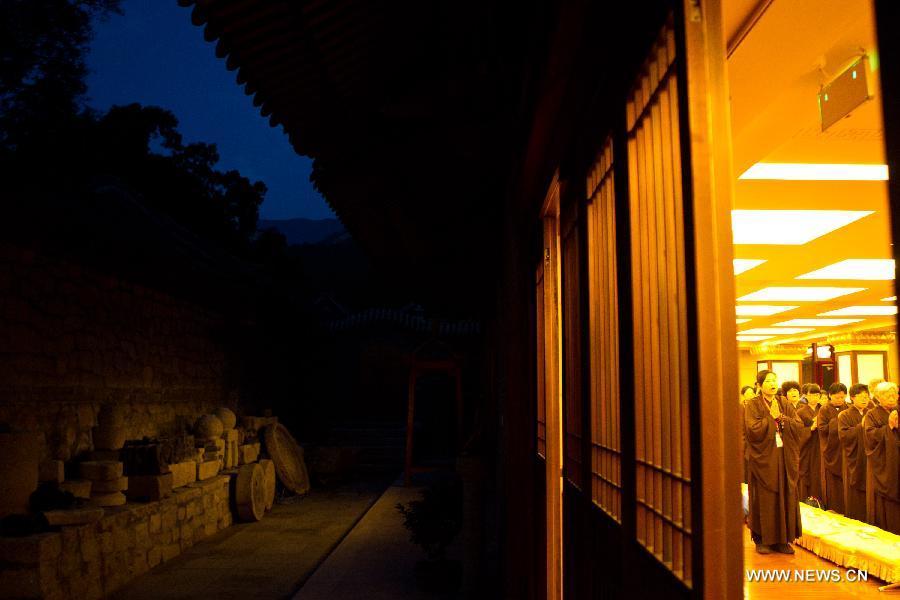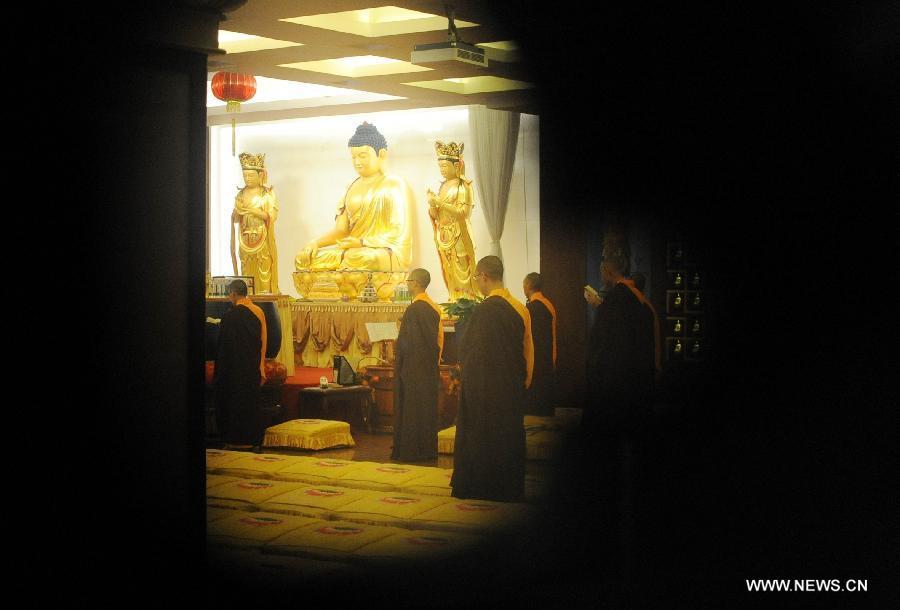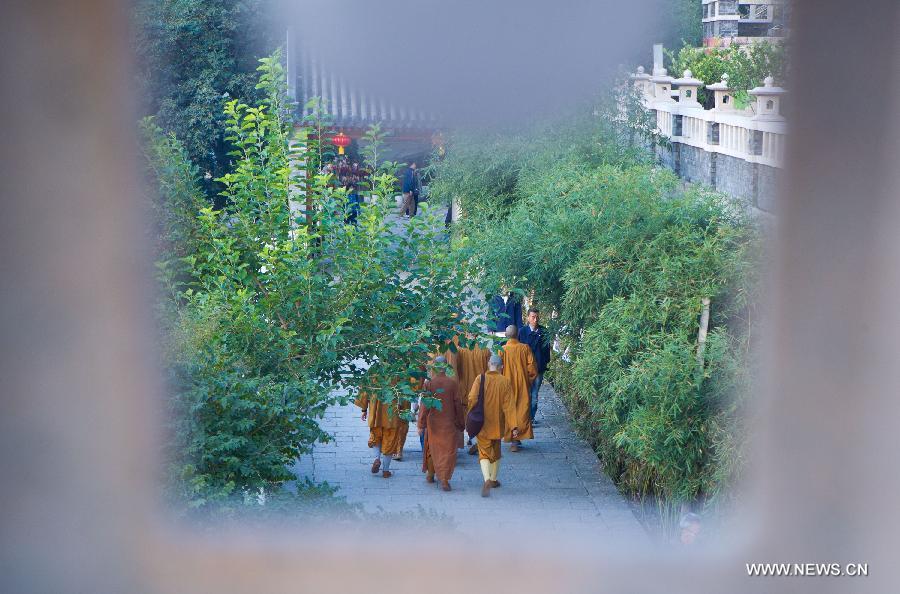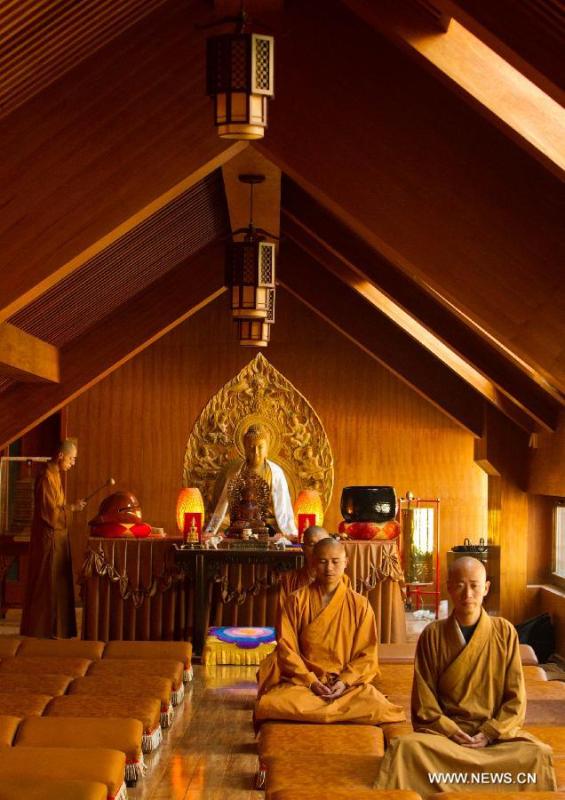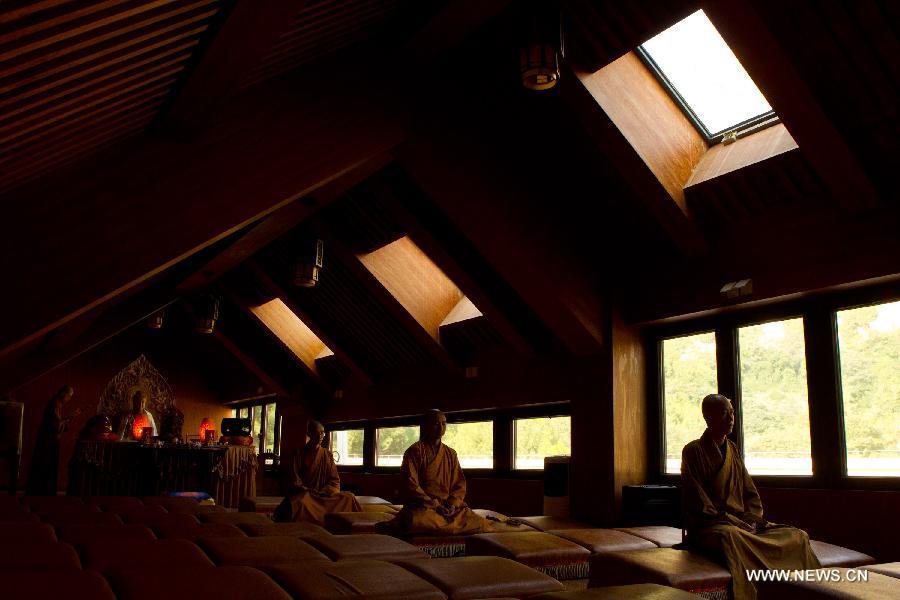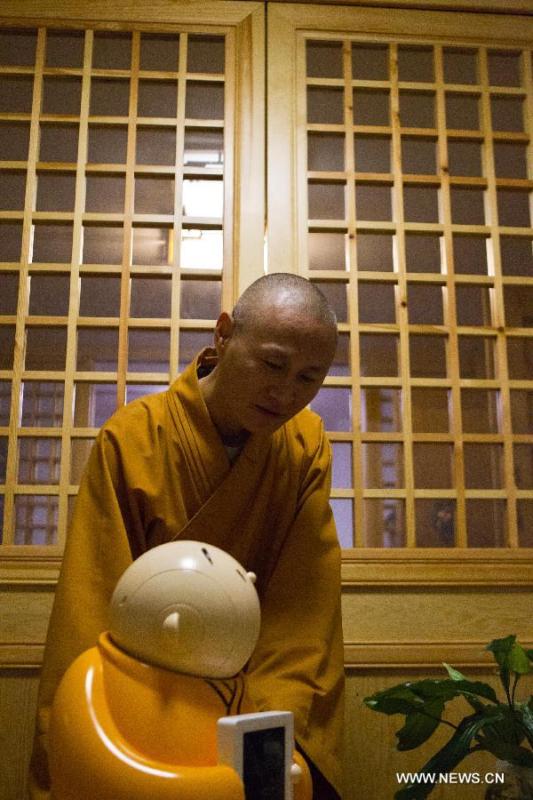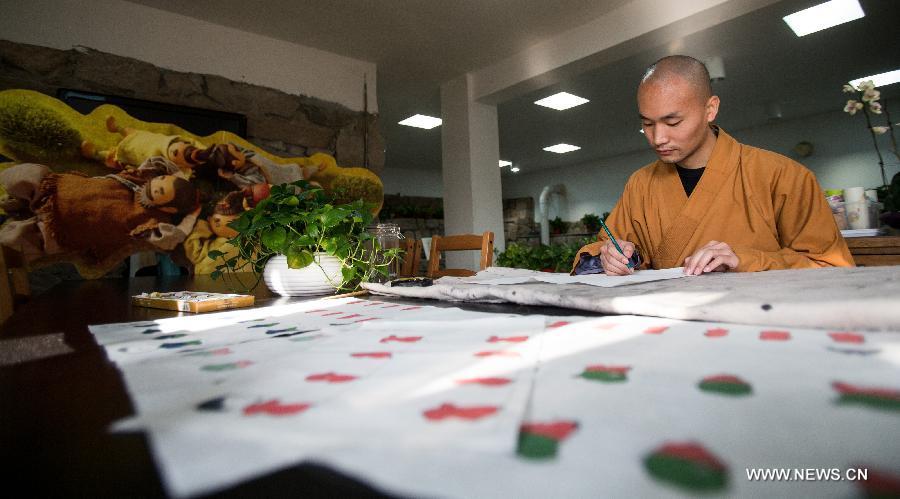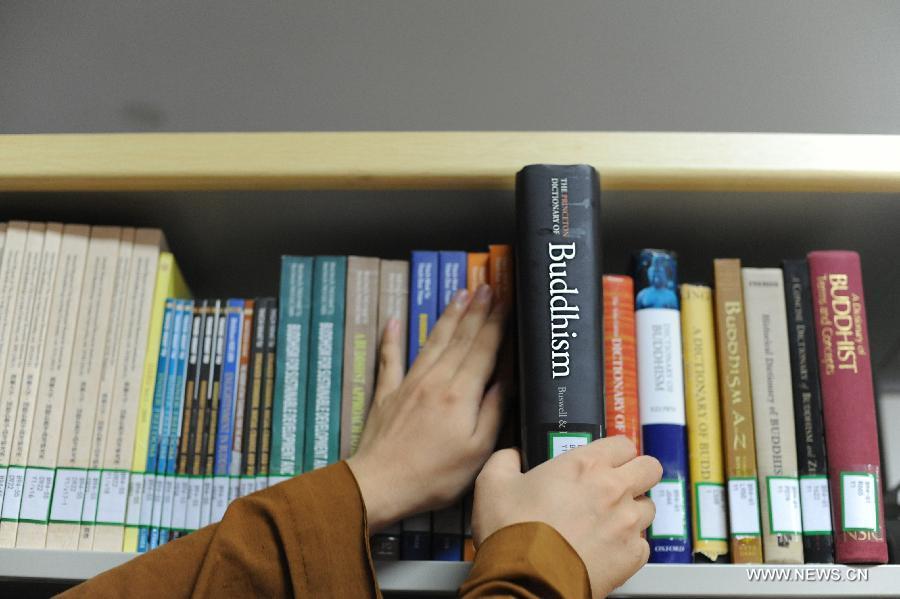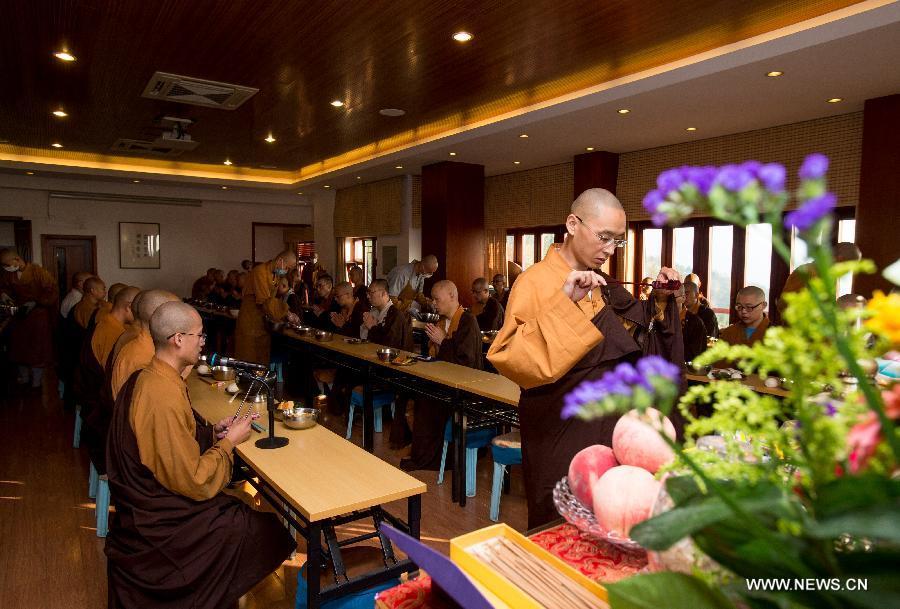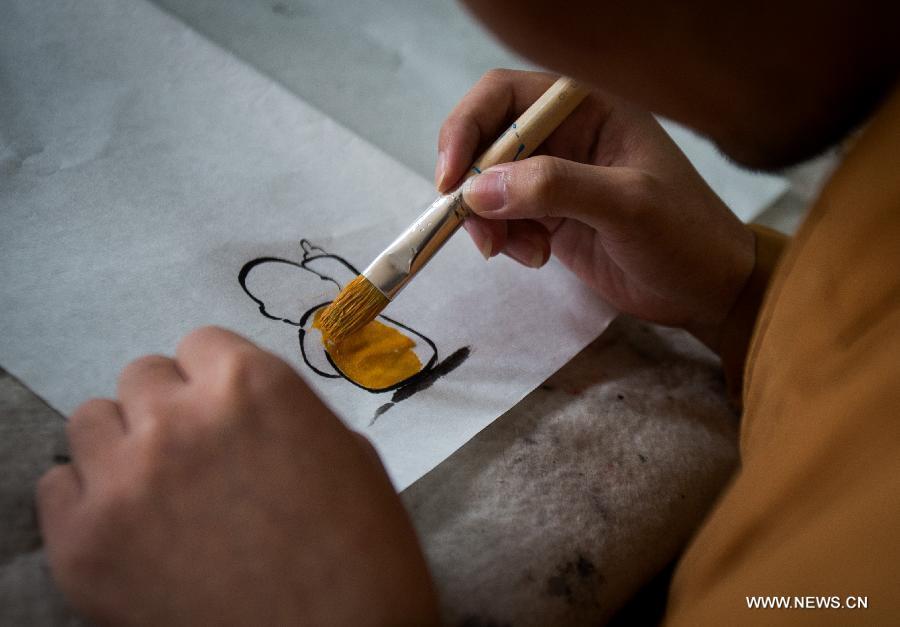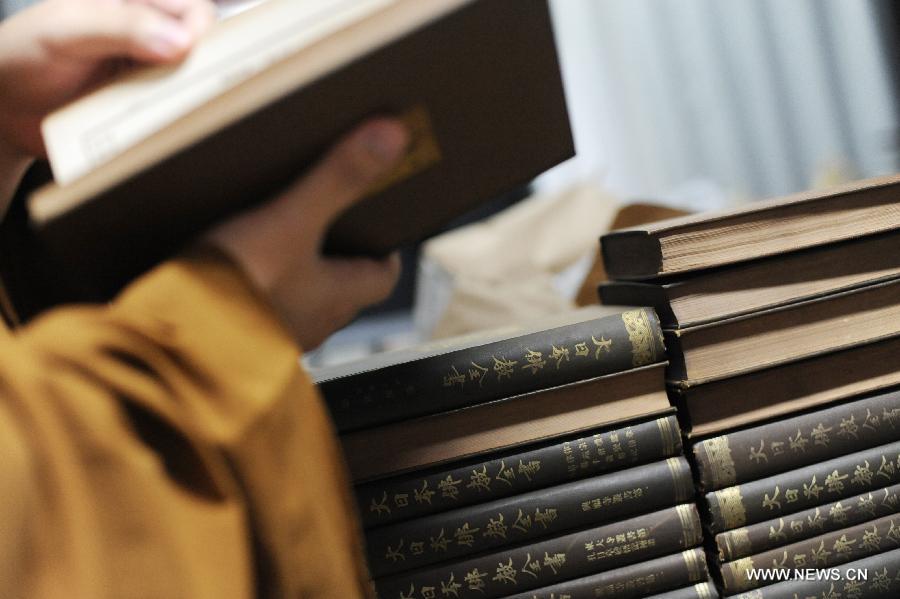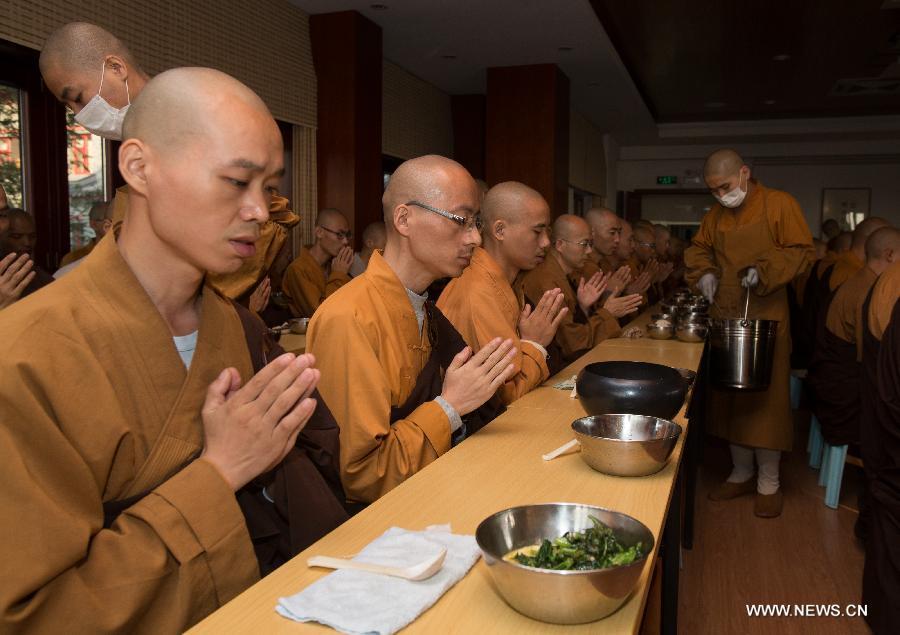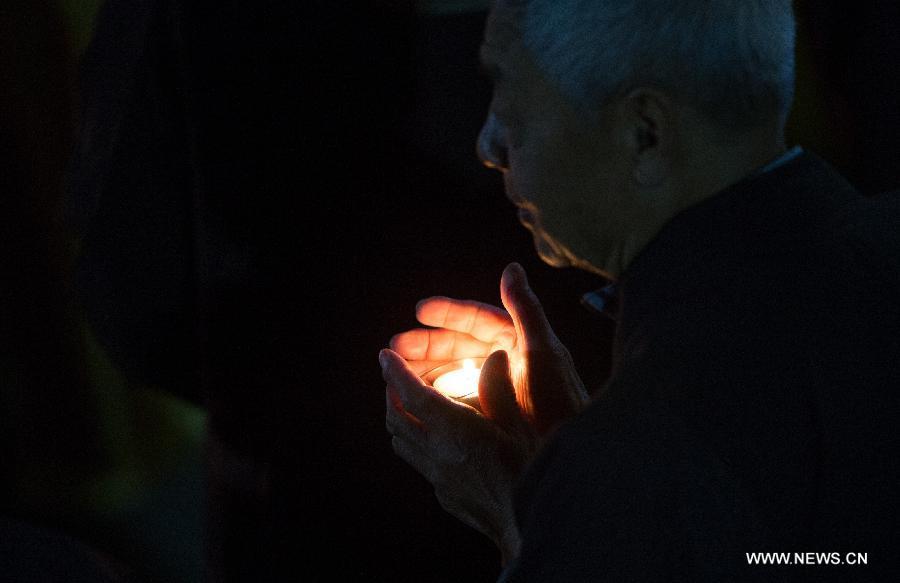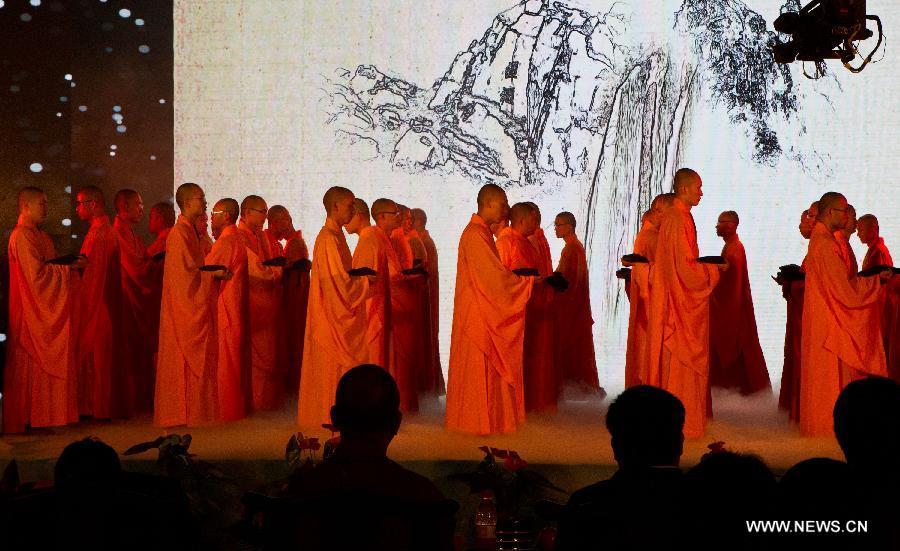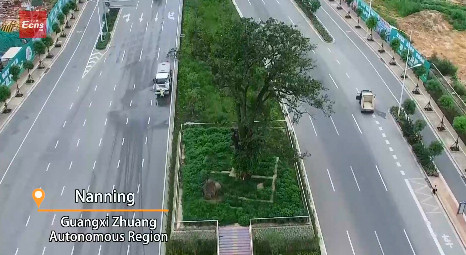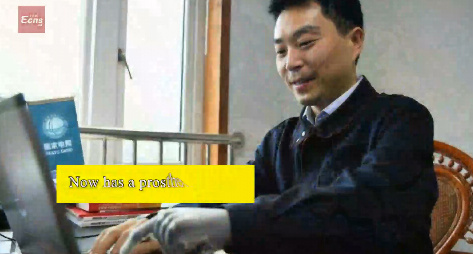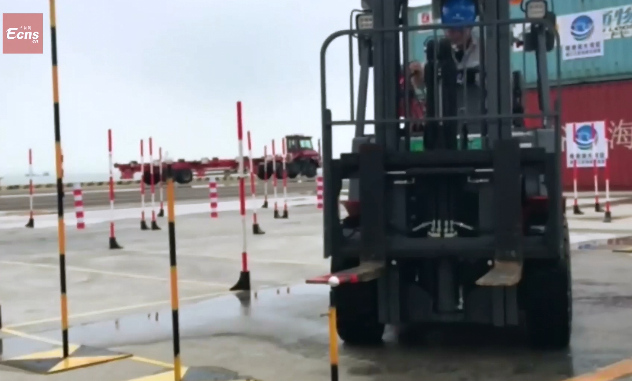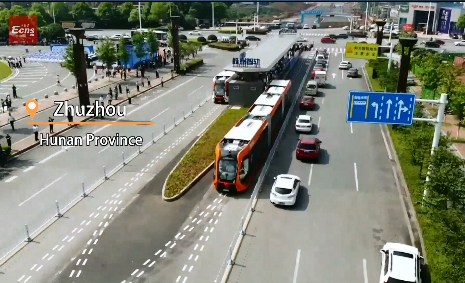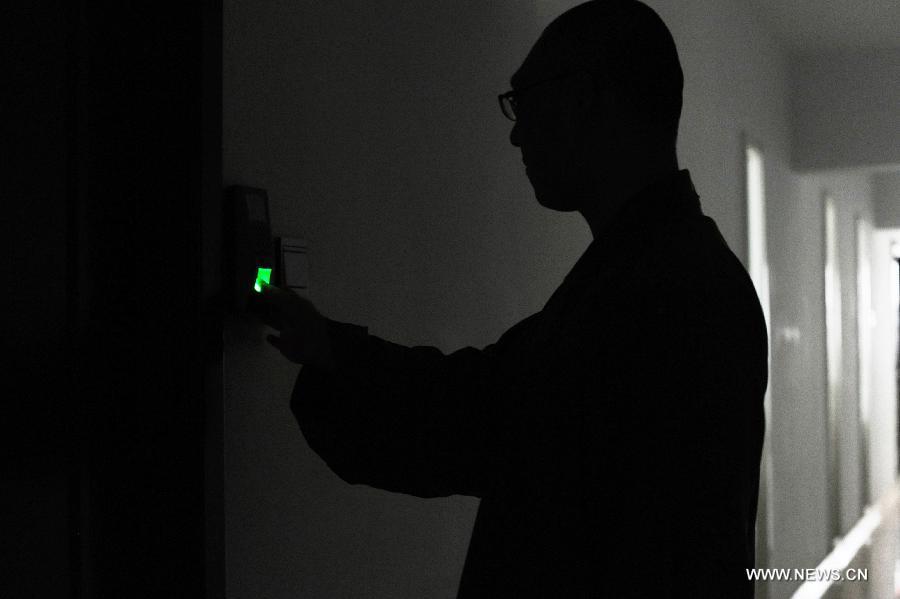
Master Xiancai enters library through fingerprint identification in Longquan Monastery in Beijing, Capital of China, Sept. 21, 2015. Longquan Monastery is located at the foot of the Fenghuangling (Phoenix Ridge) on the western outskirts of Beijing. First built in Liao Dynasty (907-1125), the monastery regains reputation as it embraces the Mobile Internet age. Every morning, Master Xuecheng answers netizens' questions on Longquan Monastery's Twitter-equivalent Weibo account, of which will be translated into nine languages and broadcast. Its WeChat (or Weixin, popular instant messaging service in China), account pushes a cartoon called the Story of Xian'er to users, which tells the everyday life of Monk Xian'er. Longquan Monastery's website has four languages, including Chinese, English, Japanese and Korean. Master Xianxin, in charge of the informatization of the Monastery, has attended domestic IT industry conferences many times. Some important buildings in the Monastery require fingerprint identification. The library of the Monastery manage a collection of 100,000 books about buddhism, in use of the information system of National Library of China. The teleconference system will be in use when big meetings are called nationally. At Longquan Monastery, the monks excel not only in Buddhist doctrine, but also boast advanced tech skills and education levels. Monks with higher education, including alumni of China's top universities, such as Tsinghua and Peking University, are behind this technology-intensified monastery. Robot Xian'er, is the world first robot monk developed by the temple with artificial intelligence experts, which is able to sense its surroundings and answer questions about Buddhism. Though Buddhism is ancient and traditional, Buddhists are modern, Master Xuecheng said, and Buddhism and Buddhists should embrace modern ways to promote Buddhism. (Photo: Xinhua/Wang Fang)






